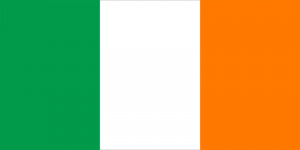Language/Irish/Grammar/Descriptive-Adjectives
Descriptive Adjectives in Irish
Descriptive adjectives are a type of adjective used in Irish to describe nouns. They provide additional information about the noun they refer to, such as color, size, and shape. In this lesson, we will learn how to use descriptive adjectives in Irish.
How to Use Descriptive Adjectives in Irish
In Irish, descriptive adjectives are placed after the noun they describe. They agree with the noun in gender, number, and case.
Here are some examples:
| Irish | Pronunciation | English |
|---|---|---|
| Buachaill deas | boo-uh-khuhl jas | handsome boy |
| Madra mór | mah-druh mohr | big dog |
| Leabhar nua | loh-wuhr noo-uh | new book |
In the examples above, the adjectives "deas", "mór", and "nua" agree with the nouns "buachaill", "madra", and "leabhar" in gender, number, and case.
Gender in Irish Descriptive Adjectives
Irish has two genders: masculine and feminine. Most Irish nouns that refer to males are masculine, and most nouns that refer to females are feminine. However, there are exceptions, and some nouns can be either masculine or feminine.
In Irish, descriptive adjectives change their endings to agree with the gender of the noun they describe. Here are some examples:
| Irish | Pronunciation | English |
|---|---|---|
| Dreoilín chaoin | dray-uh-leen kee-in | gentle wren |
| Páiste ciúin | paw-shtuh kyoo-in | quiet child |
| Madra mhaith | mah-druh wah | good dog |
In the examples above, the adjectives "chaoin" and "ciúin" are feminine, and the adjective "mhaith" is masculine. They agree with the gender of the nouns "dreoilín", "páiste", and "madra".
Number in Irish Descriptive Adjectives
Like nouns, descriptive adjectives in Irish can also be singular or plural. They change their endings to agree with the number of the noun they describe. Here are some examples:
| Irish | Pronunciation | English |
|---|---|---|
| Cóta bán | koh-tuh bawn | white coat |
| Cótaí bána | koh-tee baw-nuh | white coats |
| Ceann dearg | kyunn djar-ug | red head |
| Cinn dearga | kinn djar-ug-uh | red heads |
In the examples above, the adjectives "bán" and "dearg" are singular, and the adjectives "bána" and "dearga" are plural. They agree with the number of the nouns "cóta" and "ceann".
Case in Irish Descriptive Adjectives
Irish has four cases: nominative, genitive, dative, and accusative. Descriptive adjectives in Irish change their endings to agree with the case of the noun they describe. Here are some examples:
| Irish | Pronunciation | English |
|---|---|---|
| An duine deas | uhn din-uh jas | the handsome person |
| Leabhar an tsagairt | loh-wuhr uhn t(y)ag-uhrt | the priest's book |
| An madra seo | uhn mah-druh shuh | this dog |
| Arán duit | ahr-awn dit | bread for you |
In the examples above, the adjectives "deas" and "seo" are in the nominative case, the adjective "tsagairt" is in the genitive case, and the adjective "duit" is in the dative case.
Examples of Descriptive Adjectives in Irish
Here are some common descriptive adjectives in Irish:
- Bán: white
- Dearga: red
- Donn: brown
- Fionn: fair
- Gorm: blue
- Glas: green
- Leathair: leather
- Líne: linen
- Meánchúl: medium-sized
- Mhór: big
- Nua: new
- Rua: red
- Seacláid: chocolate
- Seamróg: shamrock
Practice
Now that you have learned about descriptive adjectives in Irish, let's practice! Translate the following phrases into Irish:
- Green book
- Big house
- Small dog
- Brown eyes
- Red wine
Check your answers below:
| English | Irish | Pronunciation |
|---|---|---|
| Green book | Leabhar glasa | loh-wuhr gluh-suh |
| Big house | Tithean mhór | ti-hen wohr |
| Small dog | Madra beag | mah-druh byug |
| Brown eyes | Súile donna | soo-uh-leh (d)un-uh |
| Red wine | Fíon rua | fyun roo-uh |
Conclusion
In this lesson, we learned how to use descriptive adjectives in Irish to describe nouns. We also learned about gender, number, and case agreement in Irish adjectives. Keep practicing, and don't forget to check out the next lesson on comparative and superlative adjectives in Irish!

